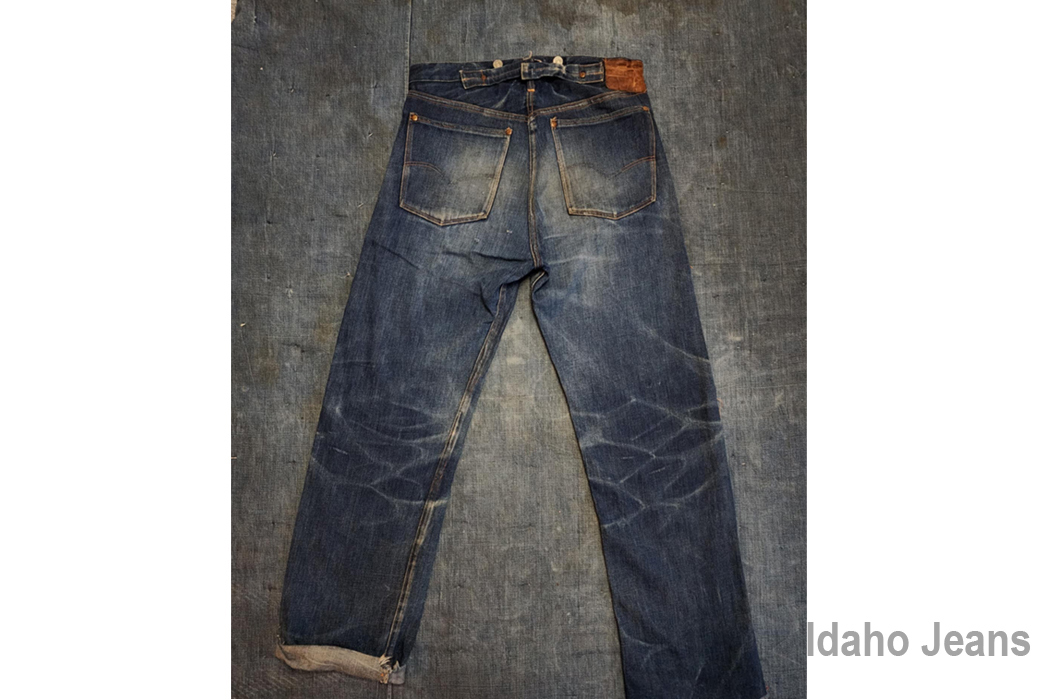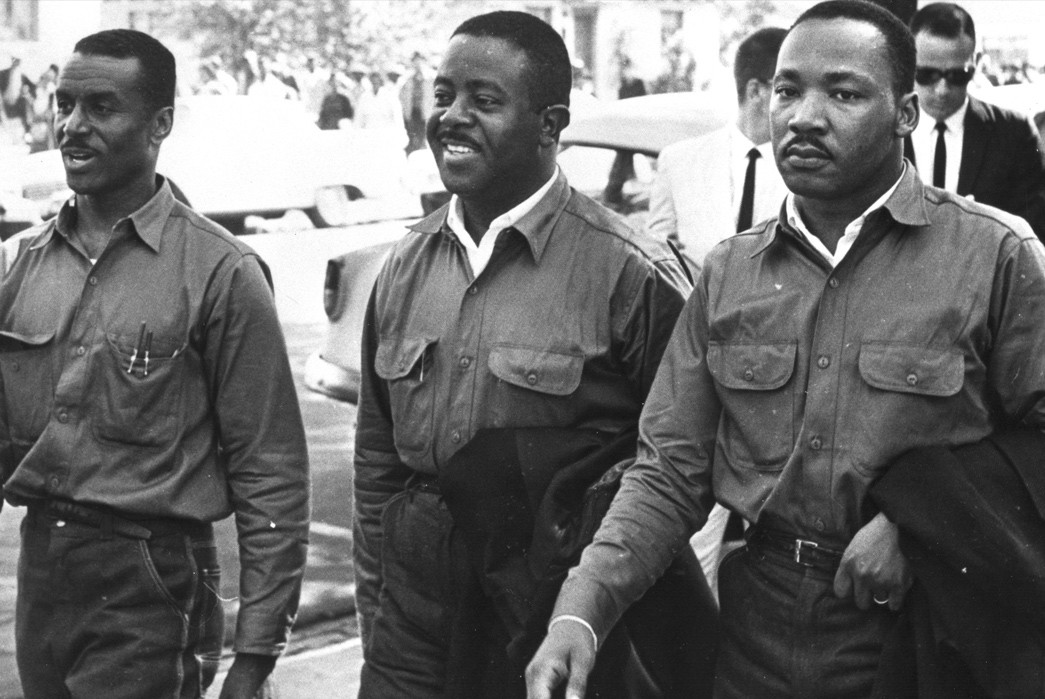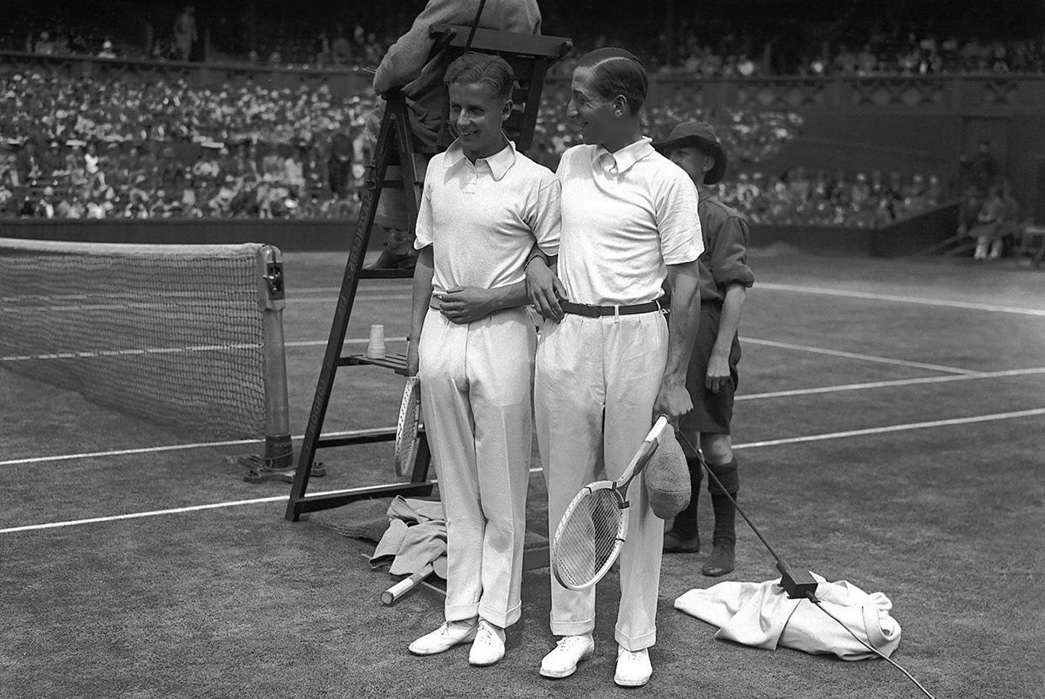- Heddels
- Posts
- A Guide to JC Penney’s Foremost Jeans – History, Value, & Different Models
A Guide to JC Penney’s Foremost Jeans – History, Value, & Different Models
A Guide to JC Penney’s Foremost Jeans – History, Value, & Different Models
Our in depth guide to all of J.C. Penney's denim offerings over the past century, focusing on their top of the line Foremost collection.
Guest

Once upon a time, American department stores made work and sportswear that would go on to become cherished pieces of sartorial history. And when it comes to denim, JC Penney’s‘ Foremost label is arguably the most successful denim line to arise out of an American retail chain.
After copycatting and undercutting Levi’s in the early 20th century, Foremost went on to have nearly 50 years in the game before being discontinued in the 1970s. As for everything that happened in between, we’ll defer to Jordan Peck of Idaho Jeans, who has put together this in-depth guide to JC Penney’s Foremost Jeans. It covers the history, different models, and ballpark valuations of different examples.
The Beginning

The first store was named ‘The Golden Rule’ and was opened in 1902 by James Cash Penney. The name ‘JC Penney’s’ was incorporated in 1913. Today’s most well-known empire of ‘everything’ stores was little more than a small corner dry goods supplier in Kemmerer, Wyoming, over 120 years ago. The initial concept was to provide an endless selection of dry goods to the small town in which the first store was opened.
Penney’s operation was somewhat different than most dry goods operations. He only accepted cash, while others accepted credit and trades in addition to cash. By immediately closing each transaction with only cash, he could quickly turn around and buy more inventory and sell it at a discounted rate. JC Penney’s was now very aggressively undercutting the competition.

In the photo above, we present the oldest known J.C. Penney clothing label. This label is on a work cardigan we found under an old mining shack in North Idaho. This label dates to the mid-1910s.
JC Penney’s was so incredibly successful that they immediately became the top chain of stores in the United States, and possibly in the world. Only 16 years after being incorporated in 1913, Penney’s had almost 1,400 stores in 1929. As far as our research in old catalogs can tell, Penney’s was selling branded clothing items right around 1913, as soon as they were incorporated. The first Penney’s labeled clothing pieces included socks, underwear, cardigans, and some formal wear.
JC Penney began introducing quality workwear around 1918. Penney’s marked work coats and work shirts have been identified in early catalogs from this time.
The First Workwear

JC Penney’s started their first dedicated workwear line, Big Mac, in 1921. Big Mac workwear targeted the mining, logging, railroad, and farming industries. These budget garments were quickly accepted by all of these operations. Contracts were formed, and Big Mac overalls, chore coats, coveralls, gloves, workshirts, and hats were sold by the millions.
Big Mac was/is a budget workwear line that provided many blue-collar workers with acceptable, roomy, and comfortable work clothing. Within a year of starting the Big Mac clothing line, Penney’s launched their highest quality workwear line, Foremost.
The Foremost Jean

Foremost workwear targeted the wild men. These cowboys were an entirely different breed of laborer. They rode horses, roped, and wrangled. Cowboy culture is very unique in that they have a dress code of sorts: Form-fitting jeans, cropped jackets, and snug-fitting work shirts. These pieces MUST fit perfectly.
Many cowboys and vaqueros rode horses for hours each day. These thousand-pound beasts were used in dangerous riding, jumping, and roping of even bigger and stronger livestock. If a loose-fitting Big Mac Overall overall cuff got tangled in a fence, a cowboy’s life could be lost in a gruesome manner. If a loose-fitting jacket sleeve tangled with a rope, a rider could lose his fingers, hand, or worse.
Jeans also needed to have a very comfortable fit so that they wouldn’t cut or pinch while the wearer sat in a saddle. Finally, these pieces needed to be extremely durable to withstand the abuse of a wrangler.
These heavy selvedge denim jeans, jackets, and shirts created immediate fierce competition for the most famous cowboy wear provider, Levi Strauss.
JC Penney’s began to unapologetically copy Levi’s top-selling pieces: the world-famous 501xx waist overall, the cowboy-cut 506xx and 507x jackets, and the indestructible denim work shirts. So similar were these copies that the consumer could barely tell them apart. The first Foremost jeans were made of blue selvedge denim, had 13 rivets, nearly identical buttons, the same SOLIDE buckle in the back, and an almost perfect copy of the famous yellow arcuate on the back pockets.
1923 – The First JC Penney’s Foremost Jeans
Above is a photograph of a stunning pair of first-model JC Penney’s Foremost jeans. These jeans date from 1923 to 1927.

Above is a close-up of the seat region on a pair of first-model jeans. Note the suspender buttons, leather tag, double-toothed buckle, exposed rivets, and the Levi’s-styled arcuates.

Only an expert denim collector can identify the differences between this Foremost jean and a 1920s pair of Levi’s 501s from this perspective.

The easiest way to identify a pair of Foremost jeans is to simply closely observe one of the buttons. Pretty much every Foremost jean has buttons marked like this.

Close-up of the stitching inside the fly. The only difference we have detected between this early model and the next model is the overlock stitch design and color on either side. The above 2 photos are of the first model.

The older model has a more primitive fly design and utilizes black thread instead of gold.

In our observational and transactional experience, similar-era Foremost jeans have sold anywhere from $800 to $15,000+. The value heavily depends on several variables. A small-sized (<29” waist) with very little remaining indigo and missing components (jerky tag, buttons, buckleback) would likely bring under $1000.
The above jean is in the perfect size of 37×31. In original unaltered conditions, and with such amazing characteristics, this example should bring upwards of $10,000.
Note: *Dates are approximate; very few exact details are known about early Foremost jeans.
Second Model Foremost Jeans – 1927

The upper jean is the 1st model. The lower jean is a second model. Notice the differences in Belt loop placement. The number of loops and their placement addressed the issue of waist gap in the back of the jeans while sitting or bending. Typically, when identifying the evolution steps of a clothing garment, look for where issues existed and how they were addressed. The oldest pieces should have the most primitive design with problems (such as waist gapping) that were later fixed. For example, the earliest denim jackets had only one pocket. As time progressed, consumers demanded more pockets be added to the garments.

There won’t be much of a price disparity between these models with subtle differences unless they are offered side by side in identical condition. Although price data is extremely rare, this second model example in a much more heavily distressed condition should bring between $7,000 and $9,000 from our limited transactional experience. This pair fits 37×30.
Third Model Foremost Jeans 1932

Above is a stunning example of a third model pair of Foremost jeans. The only difference we have identified is the absence of one of the watch pocket rivets. These little watch pockets are more of a novelty than a necessity. As such, JC Penney’s elected to remove one of the watch pocket rivets to save on expenses. We believe this occurred during and was a result of the Great Depression during this time.


Again, these minor nuances will not affect the final price of these pre-40s jeans unless in special circumstances. The above pair, however, is in such fine condition that in a golden size, it has a soft price limit. An enamored collector/wearer would pay very handsomely for these. $14,000 is not impossible.
4th Model JC Penney’s Foremost Jeans 1938

The above pair of jeans is an absolutely gorgeous pair of survivors from around 1936. This is where the first major changes were made in design.

The most obvious change is in the buckle device. The pin tooth buckle has been changed to a cheaper and more durable design. The entire belt and buckle have also been noticeably lowered.

Why the Buckle Moved
Today’s standard waist belt was uncommon in the 1900s, especially on blue jeans. Cowboys wore suspenders, which were affixed to the buttons around the waistband. The buckleback could easily be adjusted to provide a comfortable fit. During WWI, belts were heavily utilized to carry equipment such as weapons, ammunition, and tools. As the war faded away in the late teens, belts became very common on most work pants. But the original wranglers were still set in their ways. They wore suspenders instead of belts. As fashion began to change, suspenders were considered ‘old man’ style. Belts became commonplace.
A belt that ran through those loops would create stacking of buttons, the belt, the loop, and the buckleback. This would result in a hug,e uncomfortable bulge in the back of the jeans. Designers at JC Penney’s heeded the complaints of their customers and relocated the buckleback lower so that it would not conflict with the other hardware.

These newer jeans also featured the more durable buckle seen above on the left. The SOLIDE buckle was no more. These changes lower the desirability of the newer models as they are obvious indicators of a newer jean.

Although this jean features newer hardware and configuration than its predecessors, the incredible overall aesthetic, condition, character, and size (36×30), make this jean the most valuable in this article. Designers would love to use this piece as a pattern for high-end reproductions. Wardrobe designers would dress their celebrities in these jeans. High-level denim collectors would be proud to display this as a centerpiece of their collections. The price is whatever the highest bidder of the aforementioned will pay.
5th Model Foremost Jeans 1942

This is the very last of the buckleback Foremost jeans. This transitional example was extremely hard for us to find, and it is the only one we’ve ever seen. This one was found in pieces and sold to us by our friend, Connor. Connor is an enthusiastic denim hunter who finds incredible historical garments. These jeans were reconstructed by our skilled tailor.
This jean was made during WWII to satisfy war material rationing. From 1942 to 1946, the United States was at war with the Axis powers. This war was so costly that most production in the US switched to building military supplies. The government set special regulations for the design of civilian clothing, including jeans.

The darker pair of jeans is the 5th model. The lighter pair is the 6th and last of buckleback jeans. Notice how many metal-saving changes are seen in the above photo. Most WWII jeans have the above characteristics, but are also missing the buckleback. We believe this is a very early war pair from about 1942, before the bucklebacks were removed altogether. The jeans pictured above are in poor condition. They are also in a smaller size, 30×30. This pair would likely not surpass $2,500.
1942-1946 JC Penney’s Foremost Jeans
Peak war (1942-1946) jeans should have no suspender buttons, no buckleback, donut fly buttons, and no watch pocket rivets. We do not currently have possession of this model.
Post-war 1947-1955 JC Penney’s Foremost Jeans

Above is a pair of late 1940s/early 1950s Foremost jeans. The buckle is gone forever, the suspender buttons have vanished, and the once Levi’s-themed arcuate has been replaced by a straight double-line bar.


The most notable change in design is the replacement of the infamous button fly with the robust Talon 42 zipper. This is undeniably the greatest zipper ever made and an acceptable replacement for the clumsy yet nostalgic button fly.


When we roll up the cuff of a pair of jeans, we see the seam where both edges of the denim are joined. Old jeans were made of full-selvedge denim pieces. Newer jeans were constructed of a larger piece of denim that was cut in half. Because of this, we see a selvedge line on only one side of the seam. Full selvedge is indicative of an older jean and is much more sought after than half or no selvedge jeans. Although these jeans have beautiful fades and should clean up well, these zipper fly jeans only bring several hundred dollars at most.
1953 Foremost Jeans

The above photograph depicts the transition from the original sturdy tuck button(bottom) to the snap button (top). The snap button was a cheaper press-in install, which further downgraded a once iconic jean.

Mid-1960s Foremost Jeans

This is the last model of Foremost jeans (mid/late 1960s). By this time, JC Penney’s offering was no longer a ‘foremost’ product.
These final pairs of the Foremost line were shameful. The jeans were constructed of flimsy denim, which seemed to fray and split after only a very short amount of use. The hand-stamped leather tag was replaced with a piece of stamped plastic. The copper rivets, which held the most stress-induced seams in place, were eliminated.

Among other things, Penney’s also downgraded from the sturdy Talon 42 zipper to the much inferior gripper zipper. Ironically, the gripper zipper is broken on the example shown above. These jeans never bring over $100. Perhaps a deadstock pair in a decent size might surpass that number.
The End of Foremost… and Perhaps JC Penney’s
The Foremost line was completely discontinued in the early 1970s and replaced by Ranchcraft, JC Penney’s last-ditch attempt to cater to the rough and tumble cowboy market. After 50 years of providing cowboys and vaqueros with a rigid and durable product, JC Penney’s bowed out of the premium western wear market to the original denim giant, Levi Strauss, and the newborn, soon-to-be dominator of the western wear world, Wrangler.
Although the famous Foremost line had finally ended, JC Penney’s remained a staple supplier of ‘everything’ to the American consumer. But, the ushering in of the internet and online shopping immediately devastated JC Penney’s as a whole.
Gigantic online convenience stores like Amazon took control of the market. When COVID-19 hit the world in 2019 and in-person shopping came to a halt, stores without a massive online presence mostly vanished altogether. Among these were Kmart, Montgomery Ward, and JC Penney’s
Although JC Penney’s is currently teetering on the edge of complete shutdown, nobody will ever forget their amazing service to the United States as the number one ‘everything’ supplier.

If you are lucky enough to have one of these or any other pieces of workwear history in your possession and would like an appraisal or an offer to buy, please visit www.cashforjeans.com
This article is certainly not complete nor entirely accurate. This is an ongoing project that will evolve and face many corrections and edits. If you are in possession of catalogs, jeans, or anything else that would contribute to what we have created above, we are grateful for any guidance or input you can provide. Please leave your feedback below in the comments section!
All images in this article were photographed by and are the property of Idaho Jeans
Like this? Read these:
What did you think of today's newsletter? |

